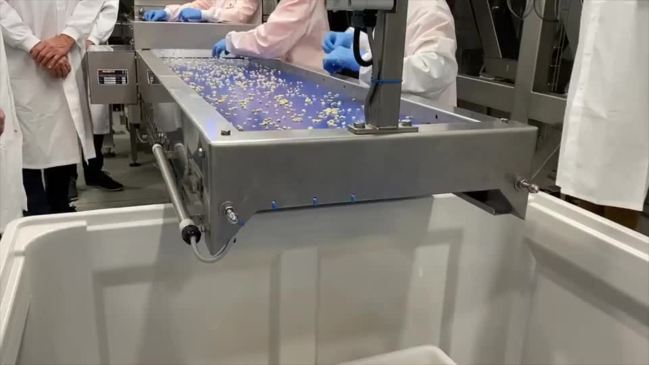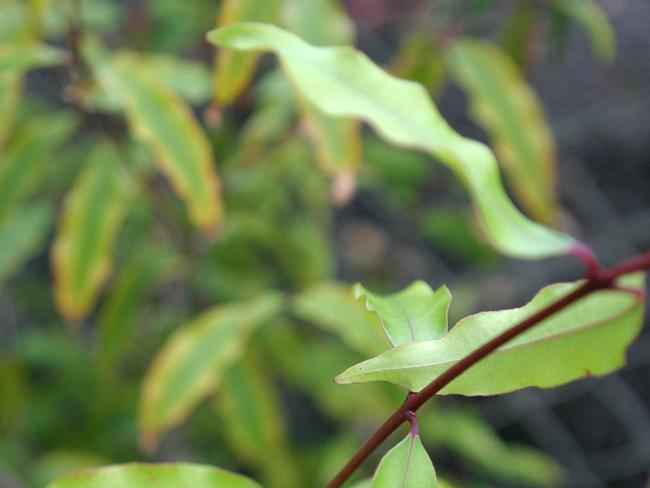Australian native ingredients have some incredible uses
From curing hiccups to reducing your salt levels - there are some surprising impacts of Australian native ingredients. Here’s how these unique foods impact our health and our cooking.

Chef and restaurateur Nornie Bero knows her native foods. Here she shares some unexpected facts about some of our most popular indigenous ingredients.

Aussie macadamias almost weren’t a thing
Despite it being our own native nut, not all Australians are aware that the macadamia is Indigenous to Australia. We aren’t even the world largest producer of this crunchy, creamy treat – South Africa is currently leading the charge, with Australia coming in second place.
“The macadamia tree almost got wiped out here in Australia, because no one wanted to plant it,” Bero says.
“Meanwhile, it was being planted in other countries, like Hawaii. It was such a shame, because it grows so beautifully here.”
The Australian macadamia nut industry didn’t begin to flourish until the 1950s. Before this time, the nut wasn’t even known outside of South East Queensland and Northern NSW, where the macadamia first originated, more than 60 million years ago.
“I think it’s so good that we have an industry now, and people know that this nut comes from us,” Bero says.

Wattleseed is a natural thickener
This delicious seed can do so much more than add chocolatey, nutty, coffee flavours to your baking. Traditionally, wattleseed was roasted over fire and ground in a mill into a type of flour, which was then used to bake a damper-like bread or cake.
Ground-roasted wattleseed can also be used as a natural binder and thickener, making it the perfect addition to soups, stews or casseroles.
“It works really well in savoury dishes,” Bero says. “And the more you grind down your wattleseed, the more flavour comes out.”

Pepperberry is the ultimate multitasker
This zingy little number is another versatile native wonder – both the leaves and the berries of the pepperberry plant are edible, and its unique flavour profiles make pepperberry ideal for both sweet and savoury dishes.
“You can eat pepperberries when they’re berries, or you can dry them out and they become pepper,” Bero says. “Because it sits on that berry side a lot more, it gives you those Sichuan pepper vibes, but doesn’t linger as long.”
As well as spicing up cakes, teas and curries, the pepperberry’s purple hue makes it a vibrant natural food colourant.
“When you’re pickling things, put some pepperberries in there and it’ll give you the pinkness that you want,” Bero suggests. “Or you can grind it down and add it to a yoghurt, and it will give it a purple tinge.”
Related story: Make It delicious: our popular video series is back for a fresh new season!
Native foods can help you cut down on salt
If you’re a sucker for salty, savoury foods but are watching your sodium intake, saltbush and bush tomato are two native ingredients that you’ll want as your new best friends.
“I call bush tomato the ‘indigenous stock cube’,” Bero says. “If you taste bush tomato, and then you taste a stock cube, you’ll see how similar they are. It’s a really healthy way to bring out the natural flavours in foods.”
Bero also has a nickname for saltbush, dubbing it the ‘indigenous oregano’.
“Yes, it’s salty,” she says. “But after the saltiness has gone away, these herby, earthy flavours similar to oregano come through. That’s why I like it so much – you get two for one out of it. You get the saltiness without having to add extra salt to your dishes, plus it gives you those herb flavours, too.”

Aniseed myrtle can treat the hiccups
Aniseed myrtle’s soft, sweet licorice-style flavour brings a unique quality to biscuits, marinades, stews and roasts, but it can also offer some surprising health benefits.
Traditionally, Indigenous Australians used aniseed myrtle to treat a variety of minor ailments, from menstrual pain and stomach upsets to hiccups. It was even used to help promote lactation.
“I love all the myrtles – lemon myrtle, cinnamon myrtle – but aniseed myrtle is my favourite,” Bero says. “I think it’s really underrated.”
For more food, travel and lifestyle news, go to delicious.com.au
Originally published as Australian native ingredients have some incredible uses


